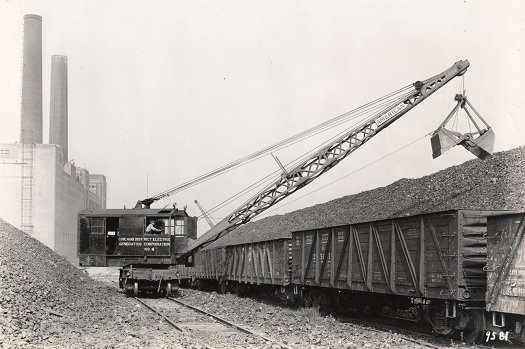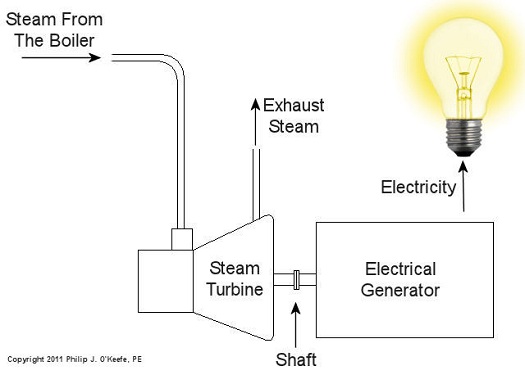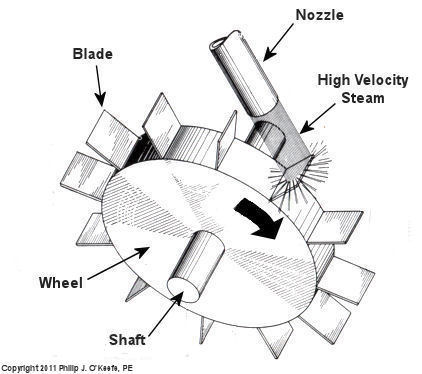|
We’ve been talking about coal fired power plants for some time now, and it’s always good to introduce third party information on subject matter in order to gain the most from the discussion. What follows is an excerpt of an interesting book review on the subject of coal consumption which appeared in the New York Times: There is perhaps no greater act of denial in modern life than sticking a plug into an electric outlet. No thinking person can eat a hamburger without knowing it was once a cow, or drink water from the tap without recognizing, at least dimly, that its journey began in some distant reservoir. Electricity is different. Fully sanitized of any hint of its origins, it pours out of the socket almost like magic. In his new book, Jeff Goodell breaks the spell with a single number: 20. That’s how many pounds of coal each person in the United States consumes, on average, every day to keep the electricity flowing. Despite its outdated image, coal generates half of our electricity, far more than any other source. Demand keeps rising, thanks in part to our appetite for new electronic gadgets and appliances; with nuclear power on hold and natural gas supplies tightening, coal’s importance is only going to increase. As Goodell puts it, “our shiny white iPod economy is propped up by dirty black rocks.” To read the entire article, follow this link: http://www.nytimes.com/2006/06/25/books/review/25powell.html?_r=2 A locomotive crane unloading coal from railcars at a power plant in the late 1930s. Next week we’ll continue our regular series, following energy’s journey through the power plant. _____________________________________________ |
Posts Tagged ‘fossil fuel’
Coal Power Plant Fundamentals – “Big Coal”
Sunday, February 27th, 2011Fossil Fuel, From Friend to Foe
Sunday, June 27th, 2010|
Did you ever have someone you considered to be a great friend and then things suddenly went bad between you? One day you’re chums and then the magic fades, soon to disappear? Sound like some marriages you’ve heard about? Well, it wasn’t too long ago that coal was considered to be America’s affordable answer to our fuel needs. It was a friend of grand proportions, there when you needed it. It remains an abundant resource, so abundant in fact that according to the US Energy Information Administration (EIA) we are sitting on coal reserves so vast they can provide us with sufficient energy to get us through the next 250 years at current rates of consumption. It was for these reasons that electric utilities decided decades ago to use coal as the primary source of fuel to generate electricity, and as it stands now just over 50% of our electrical energy is generated by burning coal. So how did coal go from being friend to foe? Well, just as when you’ve known someone for awhile their “baggage” becomes more apparent, it eventually became apparent to Americans that burning coal comes with some nasty baggage of its own, known as byproducts. These unwelcome components of the burning/oxidation process were found in the plumes of smoke that billowed out of power plants’ smokestacks. So just what are these byproducts? Well, some of it is the same stuff that’s left over at the bottom of your barbecue grille after a cookout, and some of it comes with scientific names like sulfur dioxide (SO2), nitric oxide (NO), and nitrous oxide (N2O). Let’s look at these in more detail. Ash is the residue that’s left behind after coal is burned. Fly ash is a type of ash that is made up of some very light particles and it can get carried away by the hot gases coming off the fire in a power plant boiler. Some of those particles manage to leave the smokestack and enter the environment. Sulfur dioxide, or SO2, is formed when the sulfur in coal combines with oxygen in the air during burning. When the SO2 leaves the smokestack, it can combine with moisture in the atmosphere to form acid rain. Most of us know what acid rain is, but for those that don’t, acid rain does things like rust metal, dissolve marble monuments, and in general disrupt the balance of Earth’s eco systems. Nitric oxide, NO, and nitrous oxide, N2O, are chemical compounds composed of nitrogen and oxygen that fall into the group commonly referred to as NOx, pronounced “knocks.” NOx is formed when nitrogen and oxygen in the air combine at the high temperatures released when coal is burned inside power plant furnaces. NOx is bad because its compounds are key ingredients in the formation of both acid rain and smog. Over the last thirty years emissions of these byproducts have come under increasing scrutiny by federal and state regulators in their quest to curb them and their impact on our environment. As a result, electric utilities have had to comply with ever-tightening regulations. To comply, coals with lower sulfur content have been used, often brought in over very long distances from mines in the US and even foreign countries like Columbia. Utilities have also been installing expensive pollution control equipment in their coal fired power plants. But these changes make operations more expensive, eating into the utilities’ profits. Now we may not like the idea of utilities earning a profit, but this is a necessary reality to some extent in order to keep their business solvent. They’re not in it for the fun of it, after all. And I’m sure you guessed by now that the net result of the regulatory agencies’ mandates is that our electric bills just keep escalating. Now much of what lies behind the current unfavorable status of coal powered plants is that when operating on our native soil they have high visibility. We don’t like to be reminded of the negatives that accompany the production of energy. Put that same plant in another faraway country and the byproducts cease to be an issue. It’s happening over there after all, and we don’t have to be confronted with it. We neglect to remind ourselves that the earth’s atmosphere is for the most part a contained unit, and that means that what happens there is happening here, whether there happens to be on the other side of the globe or not. Next week we’ll continue our explorations into coal, examining the impact of the low sulfur variety on electric utility power generation. _____________________________________________ |
Nuclear Power, Is It The Answer?
Sunday, April 18th, 2010|
In weeks past we’ve explored wind energy and the possibility of it overtaking fossil fuel burning plants as our main source of power. This week we’ll discuss the next most viable option to do the job, that of nuclear power. Nuclear power, unlike fossil fuel plants, doesn’t combust fuel and therefore doesn’t contribute to air pollution. But unlike wind turbines, their electrical output is reliable, that is to say, we know, save for a major breakdown, that they will put out X-amount of power every day, regardless of weather conditions. As a matter of fact, according to the Nuclear Energy Institute, the 103 nuclear power plants in operation in the United States today are the most reliable and efficient producers of energy to our electric power grid. They account for about 20% of the power generated and produce a total capacity of 96.245 gigawatts, meaning, a whopping 96.245 billion watts. Nuclear energy is clean, reliable, and produces loads of power, so why not initiate a program to begin immediate replacement of our dirty fossil fueled plants? It’s time to take a closer look. Needless to say, large scale replacement of fossil fueled power plants with nuclear power plants would be a huge undertaking. You’ll remember from my previous blog postings that the US Department of Energy reports that 71.2% of our power is currently being produced by burning fossil fuels. All power plants, and especially nuclear power plants, are extremely expensive to build. Let’s look at an example. In 2007, Florida Power & Light informed the Florida Public Service Commission that the cost to build a new nuclear plant in south Florida would be approximately $8,000 per kilowatt-hour. How does this large sum affect the consumer in terms of real dollars? Well, let’s say you want to build a 3,000 megawatt (3,000 million watt) nuclear plant. This is enough capacity to provide power for about 2 million people in the US. When all is said and done, you’ll end up having to pay out $24 billion before you can start generating electricity. That looks like a lot of cash outlay for one plant, but what does it mean to each individual? If we do the math, a nuclear plant that is capable of supplying 2 million people with electricity will result in a cost of approximately $12,000 per person. Considering that, will investors, taxpayers, and consumers be willing to cover the losses that accrue when all existing fossil plants are closed and nuclear plants are erected to replace them? As with wind powered energy, cost is an enormous factor when considering the viability of nuclear power plants, but there is something way more profound to consider. Nuclear power plants produce radioactive waste. This waste remains radioactive, and therefore highly poisonous to the environment, for millions of years. That’s right, millions, not hundreds, not thousands, millions of years. The Nuclear Energy Information Service states that for each nuclear reactor that exists, 50 to 60 tons of high level radioactive waste is produced every year. So you’ve got all this waste as a byproduct of nuclear energy production, and, of course, there’s a lot of controversy surrounding its safe disposal. Not only does it lay around for millions of years, the costs of dealing with it are staggering. The US Department of Energy estimated in 2008 that it will cost around $96 billion to construct the Yucca Mountain nuclear waste repository in Nevada, which is basically a huge underground garbage dump for nuclear waste. And this amount of money will only keep it in operation for about 150 years. What happens after that? And if we build more nuclear plants in addition to those that currently exist, what will then be the cost of disposing of their waste? No one knows for sure, but they know it’s a mighty large sum, and certainly much too large for the ailing American economy to absorb. Now, Dr. Seuss, the guy that wrote The Cat in the Hat and other wonders, was an actual person, and he had a lot to say about things that didn’t involve gnarly looking creatures that go “BUMP!” in the night: “Sometimes the questions are complicated and the answers are simple.” Well, that’s sort of the case here. There are a lot of seemingly simple answers being posed to address our energy and environmental problems, but when you start asking pointed questions to delve deeply into the feasibility of those answers, things can get extremely complicated. We have seen through our present blog series that these answers inevitably lead to more questions and a multiplicity of other problems, and so far we haven’t seen an easy fix to our energy issues. But are we just making an issue where none exists? Are we making a mountain out of a mole hill? Next week we’ll explore a few more options that are being considered as alternative energy sources. Perhaps there is an easy answer to our power dilemma. _____________________________________________ |
Wind Turbine Energy, Is It The Answer?
Sunday, April 4th, 2010|
Alternative energy is a hot topic today. There are certainly benefits to be gained by replacing fossil fueled power plants with alternative energy sources. One of the most publicized of these is the free energy that is generated by wind turbines that drive electric generators. Surely this is a win-win situation? Let’s take a closer look! If you’ve been out in the country within the last few years you’ve surely seen the new generation of windmill. These mammoths are so large and intimidating they remind me of the cartoon robot, Gigantor, popular back in the 1960s—scary until you get to know him. Yes, these wind turbines are big, and so is their cost. They are so expensive that a return on investment is a rather long way off. Let’s examine the numbers. A 2 megawatt wind turbine can cost over $2 million to purchase and install. By 2 megawatt, I mean two million watts of output. The generator on this baby can produce enough power to light around 33,330 sixty watt bulbs. If I were to install one on my property, my local electric utility would be willing to pay me approximately $10,000 per month to buy its power from me. At this rate of compensation, it would take over 16 years to realize a return on my investment. That’s the “looks good on paper” figure. Realistically speaking, it would actually take a lot longer than 16 years if we factor in the cost of maintenance and the interest rates on borrowed money. So what happens if the Gigantor in your back yard needs servicing? I did some checking, and it’s not cheap. It can cost as much as $15,000 just to hire the massive crane that is required to lift the heavy parts involved. Aside from purchase price and maintenance expenses, another thing to consider when talking installation of wind turbines is the fact that they operate at the mercy of Mother Nature. No wind, no power. Is there anything we can do to compensate for this factor, like store the energy generated on a windy day for future usage? This would be a great solution, if only battery technology was economical enough for storage of the vast amounts of energy that is required to power an electric utility grid if the wind stops blowing for an extended period of time. For example, sodium battery technology is up to the task, but the cost is high, at around $3,500.00 per kilowatt-hour. At this price a 2 megawatt wind turbine would need about $7 million worth of storage just to get us through about one hour of calm weather! Now here’s a proposed solution to the storage issue that you may have read about. It involves utilizing storage systems which would use electric motors to convert the electrical energy from the turbine generators into mechanical energy. This energy would then be transferred to mechanical storage devices, such as a huge flywheel. Then, if the wind stops blowing and power stops flowing, the motor on the flywheel can be turned into an electric generator. The mechanical energy stored in its spinning mass would power the generator, which would in turn keep electricity flowing into the power grid. Now remember, the amount of mechanical energy we can store in a flywheel spinning at a given speed depends on its mass, that is, how heavy it is. The more energy we have to store, the heavier the flywheel has to be. So when we’re talking about storing many millions of watts of energy to get us through several days of calm weather, we’d have to make a flywheel so massive it would be impractical and uneconomical to build. Just to store about one hour’s worth of energy from our 2-megawatt wind turbine we’d need to build a flywheel over 65 feet in diameter that spins at 1800 rpm and weighs more than 9 tons. Another proposal to store the wind turbine’s energy involves the use of electric motors to drive air compressors that would pressurize caverns deep below the earth’s surface. This effectively creates what is called a compressed-air energy storage (CAES) facility. The idea here is that when the wind stops, the motors would act as generators and the compressors would act as air turbines. This pressurized air could then be drained from the caverns in which it is stored and redirected to flow through the turbine. Then, finally, the stored mechanical energy in the pressurized air would be converted by the air turbine and generator back into electrical energy to power the grid. At best, a CAES facility will run at about 70% efficiency. That means for every 100 kilowatt-hours of energy you put into storage, you only receive 70 kilowatt-hours in return. Once examined, it seems that current technology does not provide a cost-feasible solution for the replacement of fossil fuel backed energy with wind turbine energy. So where do we go from here? We’ll continue our exploration of alternative energy next week. _________________________________________________________________ |










